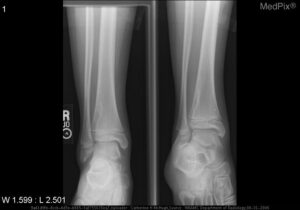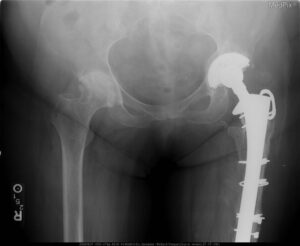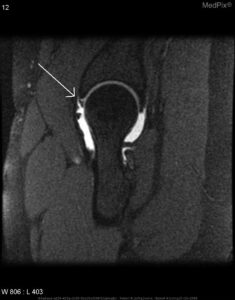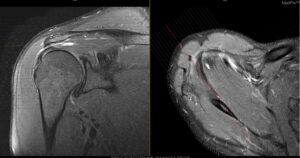Hypermobility, in the context of joints, refers to the ability of a joint to move beyond its normal range of motion. This can occur due to loose or weak ligaments, which are the tissues that help stabilize joints. Hypermobility can be a normal variation in some individuals, but it can also be associated with certain conditions like Ehlers-Danlos Syndrome or Hypermobility Spectrum Disorders.
Archives: Conditions
Holds our conditions and condition-specific data
Leg Length Discrepancy
Is one of your legs longer than the other? This can cause multiple compensations throughout your body that can result in pain, joint degeneration, abnormal gait patterns, or muscle tightness/fatigue. Depending on the cause of the leg length difference, it may or may not be correctable. You may have a true leg length difference which will be helped by the insertion of the proper-sized lift in the shoe of the shorter leg. You may have a functional leg length difference that is the result of a pelvic or spinal misalignment that may be reduced or eliminated with treatment. At Goodell PT we can examine and measure you to determine the cause, as well as the treatment, of the difference and help you to reduce your pain, improve your gait, and reduce your chance of degenerating joints in compensation.
Migraines
If you experience migraine headaches, physical therapy may be able to help you. While the cause of migraines is not always known, often a headache is labeled as a migraine when in fact there is an underlying cervical joint or muscle problem that is causing headache symptoms that are similar to migraine. Or, if you have true migraines, physical therapy to restore normal cervical joint and muscular mobility oftentimes will still reduce the symptoms, in conjunction with medical management from your doctor. At Goodell PT, we can assess your neck and determine if there seem to be headache contributory factors that are treatable in physical therapy.
Shoulder Replacement
Rehabilitation after total shoulder replacement is important for improving strength, functional mobility, flexibility, and pain level. We will teach you what positions/motions are allowed/disallowed in order for you to experience optimal healing with the least amount of pain and the best possible strength. We will set up a home exercise program to complement your treatment in the clinic to ensure the best possible post-surgical result and return to as much arm function as possible.
Sprained Ankle
 “Oh, it’s just an ankle sprain – no big deal.” Actually, an ankle sprain can be a very difficult injury to recover from, especially without proper rehabilitation. At Goodell PT, we will determine the tissue at fault and work to reduce the swelling, mobilize the joint appropriately, as well as safely and effectively progress you through exercises and get you back to normal walking and/or sporting activity as soon as possible. We will also assess to determine if the there are contributing factors from the spine, pelvis, hip, or knee that are predisposing you to ankle sprains and work to correct those factors accordingly.
“Oh, it’s just an ankle sprain – no big deal.” Actually, an ankle sprain can be a very difficult injury to recover from, especially without proper rehabilitation. At Goodell PT, we will determine the tissue at fault and work to reduce the swelling, mobilize the joint appropriately, as well as safely and effectively progress you through exercises and get you back to normal walking and/or sporting activity as soon as possible. We will also assess to determine if the there are contributing factors from the spine, pelvis, hip, or knee that are predisposing you to ankle sprains and work to correct those factors accordingly.
SI joint pain
Often confused for back pain or hip pain, the sacroiliac (SI) joint is a very common cause of posterior buttock/leg pain. At Goodell Physical Therapy, we will examine and determine the origin of your pain and develop a treatment plan which will consist of the proper exercises for mobility and/or stabilization, as well as manual therapy treatments to restore proper pelvic alignment and mobility.
Total hip replacement
 Rehabilitation after hip replacement is important for improving flexibility, range of motion, and strength, as well as teaching you what motions are allowed/disallowed and for what period of time after surgery. At Goodell Physical Therapy, we will analyze your walking pattern with/without assistive devices and help you safely and appropriately return to normal walking without pain over time. We will teach you a home exercise program to progressively strengthen and stretch the most important hip and lower extremity muscles, ensuring the best possible recovery.
Rehabilitation after hip replacement is important for improving flexibility, range of motion, and strength, as well as teaching you what motions are allowed/disallowed and for what period of time after surgery. At Goodell Physical Therapy, we will analyze your walking pattern with/without assistive devices and help you safely and appropriately return to normal walking without pain over time. We will teach you a home exercise program to progressively strengthen and stretch the most important hip and lower extremity muscles, ensuring the best possible recovery.
Hip labral tear
 The labrum is a ring of cartilage around the hip socket that helps to keep the head of the femur bone centered in the socket allowing the hip to move effectively through a full and range of motion in a stable fashion. If the labrum tears, it is sometimes best repaired surgically as, depending on where it is torn, it does not always completely heal on its own. At Goodell PT, we can help diagnose a hip labral tear and develop a comprehensive rehabilitation exercise program for strength, mobility, and pain relief, along with recommending a good orthopedic surgeon if that appears to be necessary.
The labrum is a ring of cartilage around the hip socket that helps to keep the head of the femur bone centered in the socket allowing the hip to move effectively through a full and range of motion in a stable fashion. If the labrum tears, it is sometimes best repaired surgically as, depending on where it is torn, it does not always completely heal on its own. At Goodell PT, we can help diagnose a hip labral tear and develop a comprehensive rehabilitation exercise program for strength, mobility, and pain relief, along with recommending a good orthopedic surgeon if that appears to be necessary.
Shoulder labral tear
The labrum is a ring of cartilage around the shoulder socket that helps to keep the head of the humerus bone centered in the socket allowing the shoulder to move effectively through a full range of motion in a stable fashion. If the labrum tears, it is sometimes best repaired surgically as, depending on where it is torn, it does not always completely heal on its own. At Goodell PT, we can help diagnose a shoulder labral tear and develop a comprehensive rehabilitation exercise program for strength, mobility, and pain relief, along with recommending a good orthopedic surgeon if that appears to be necessary.
Rotator cuff tear
 The rotator cuff is a group of four shoulder muscles that help to promote proper shoulder mechanics and center the head of the humerus bone in the shoulder blade socket, enabling optimal shoulder movement without pain. Any of the four rotator cuff muscles can develop a tear or strain, and this can be a sharp, traumatic episode or a slowly-developing occurrence over time. At Goodell PT, we can help diagnose a rotator cuff strain or tear, and develop a comprehensive exercise program to help strengthen and rehabilitate the involved muscle(s). There may also be contributing factors from the cervical and thoracic spine regions that we can identify and address in order to decrease strain forces on cuff itself.
The rotator cuff is a group of four shoulder muscles that help to promote proper shoulder mechanics and center the head of the humerus bone in the shoulder blade socket, enabling optimal shoulder movement without pain. Any of the four rotator cuff muscles can develop a tear or strain, and this can be a sharp, traumatic episode or a slowly-developing occurrence over time. At Goodell PT, we can help diagnose a rotator cuff strain or tear, and develop a comprehensive exercise program to help strengthen and rehabilitate the involved muscle(s). There may also be contributing factors from the cervical and thoracic spine regions that we can identify and address in order to decrease strain forces on cuff itself.
